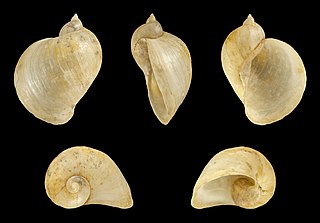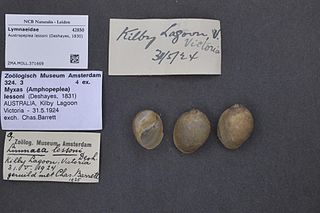
Fasciola hepatica, also known as the common liver fluke or sheep liver fluke, is a parasitic trematode of the class Trematoda, phylum Platyhelminthes. It infects the livers of various mammals, including humans, and is transmitted by sheep and cattle to humans all over the world. The disease caused by the fluke is called fasciolosis or fascioliasis, which is a type of helminthiasis and has been classified as a neglected tropical disease. Fasciolosis is currently classified as a plant/food-borne trematode infection, often acquired through eating the parasite's metacercariae encysted on plants. F. hepatica, which is distributed worldwide, has been known as an important parasite of sheep and cattle for decades and causes significant economic losses in these livestock species, up to £23 million in the UK alone. Because of its relatively large size and economic importance, it has been the subject of many scientific investigations and may be the best-known of any trematode species. F. hepatica's closest relative is Fasciola gigantica. These two flukes are sister species; they share many morphological features and can mate with each other.

Fasciola gigantica is a parasitic flatworm of the class Trematoda, which causes tropical fascioliasis. It is regarded as one of the most important single platyhelminth infections of ruminants in Asia and Africa. The infection is commonly called fasciolosis.

Echinostoma is a genus of trematodes (flukes), which can infect both humans and other animals. These intestinal flukes have a three-host life cycle with snails or other aquatic organisms as intermediate hosts, and a variety of animals, including humans, as their definitive hosts.

Lymnaeidae, common name the pond snails, is a taxonomic family of small to large air-breathing freshwater snails, aquatic pulmonate gastropod mollusks, that belong to the clade Hygrophila.

Radix is a genus of air-breathing freshwater snails, aquatic pulmonate gastropods in the family Lymnaeidae, the pond snails.

Pseudosuccinea columella, the American ribbed fluke snail, is a species of air-breathing freshwater snail, an aquatic pulmonate gastropod mollusk in the family Lymnaeidae, the pond snails.

Radix auricularia, the big-ear radix, is a species of medium-sized freshwater snail, an aquatic pulmonate gastropod mollusk in the family Lymnaeidae.

Radix rubiginosa is a species of air-breathing freshwater snail, an aquatic pulmonate gastropod in the family Lymnaeidae, the pond snails.

Pirenella cingulata is a species of medium-sized sea snails or mud snails, marine gastropod mollusks in the family Potamididae, the horn snails.

Echinostoma revolutum is a trematode parasite of which the adults can infect birds and mammals, including humans. In humans, it causes echinostomiasis.
Echinostoma hortense is an intestinal fluke of the class Trematoda, which has been found to infect humans in East Asian countries such as Korea, China, and Japan. This parasite resides in the intestines of birds, rats and other mammals such as humans. While human infections are very rare in other regions of the world, East Asian countries have reported human infections up to about 24% of the population in some endemic sub-regions. E. hortense infections are zoonotic infections, which occurs from eating raw or undercooked freshwater fish. The primary disease associated with an E. hortense infection is called echinostomiasis, which is a general name given to diseases caused by Trematodes of the genus Echinostoma.
Echinostoma cinetorchis is a species of human intestinal fluke, a trematode in the family Echinostomatidae.
Artyfechinostomum malayanum is a species of digenetic trematode in the family Echinostomatidae.
Hypoderaeum conoideum is a species of digenetic trematodes in the family Echinostomatidae.

Austropeplea is a genus of air-breathing freshwater snails, aquatic pulmonate gastropod mollusks in the family Lymnaeidae, the pond snails.
Echinostoma caproni is a species of 37-spined Egyptian echinostome. It is naturally found in Cameroon, Congo, Egypt, Madagascar, and Togo.

Semisulcospira libertina is a species of freshwater snail with an operculum, an aquatic gastropod mollusk in the family Semisulcospiridae. Widespread in east Asia, it lives in China, Taiwan, Korea, Japan, and the Philippines. In some countries it is harvested as a food source. It is medically important as a vector of clonorchiasis, paragonimiasis, metagonimiasis and others.

Metagonimus yokogawai, or the Yokogawa fluke, is a species of a trematode, or fluke worm, in the family Heterophyidae.

Gyraulus convexiusculus is a species of freshwater snail, an aquatic pulmonate gastropod mollusk in the family Planorbidae, the ram's horn snails.
Echinostoma miyagawai is a species of echinostome parasite that is found in Europe, Southeast Asia and Japan.












